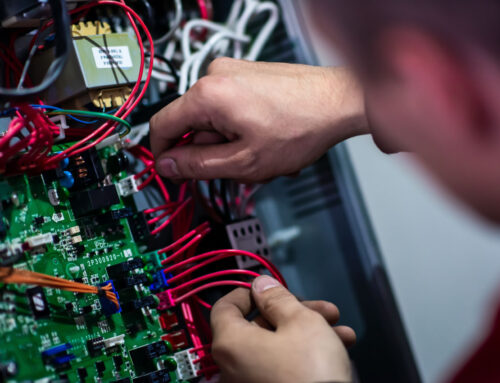In an era dominated by technological advancements, the field of electrical automation has become a cornerstone in revolutionizing various industries. From manufacturing plants to smart homes, the applications of electrical automation are vast and impactful. In this comprehensive guide, we will delve into the fundamentals, components, sensors, applications, and both the advantages and disadvantages of electrical automation. Additionally, we’ll explore best practices for implementing this transformative technology.
What is Electrical Automation?
At its core, electrical automation involves the use of control systems, such as computers or programmable logic controllers (PLCs), to regulate and operate various processes without human intervention. This technology aims to enhance efficiency, accuracy, and reliability by automating tasks that were traditionally performed manually.
Understanding the Basics of Electrical Automation
The fundamental principle of electrical automation revolves around the concept of control loops. These loops consist of sensors, controllers, and actuators working in unison to maintain desired conditions or outputs. By programming the control system, engineers can ensure a seamless and precise execution of tasks.
Components of an Electrical Automation System
A typical electrical automation system comprises several key components. These include sensors for data input, a controller to process information and make decisions, and actuators to carry out the desired actions. Communication networks facilitate the exchange of data between these components, forming a cohesive and interconnected system.
Types of Sensors Used in Electrical Automation
Sensors play a crucial role in gathering information from the environment. From proximity sensors to temperature sensors and photoelectric sensors, each type serves a specific purpose in the automation process. Understanding the nuances of these sensors is essential for designing effective automation systems.
Applications of Electrical Automation in Various Industries
The versatility of electrical automation finds application across diverse industries. In manufacturing, it streamlines production processes, while in agriculture, it optimizes irrigation and harvesting. Healthcare, transportation, and energy sectors also benefit from automation, leading to increased productivity and resource efficiency.
Advantages and Disadvantages of Electrical Automation
Like any technology, electrical automation comes with its own set of pros and cons. Advantages include improved efficiency, reduced human error, and increased production rates. However, challenges such as initial costs, potential job displacement, and system vulnerabilities must be carefully considered.
Best Practices for Implementing Electrical Automation
Successfully implementing electrical automation requires careful planning and adherence to best practices. This section will explore considerations such as thorough system integration, regular maintenance, cybersecurity measures, and employee training. These practices are essential to maximizing the benefits of automation while mitigating potential risks.
Electrical automation is a transformative force with far-reaching implications for various industries. As technology continues to evolve, understanding the basics, components, sensors, applications, advantages, disadvantages, and best practices of electrical automation becomes paramount for individuals and businesses alike. Stay tuned for a future powered by efficiency, precision, and innovation in the world of electrical automation, or give RBT a call at 519-752-3675 to learn more.






